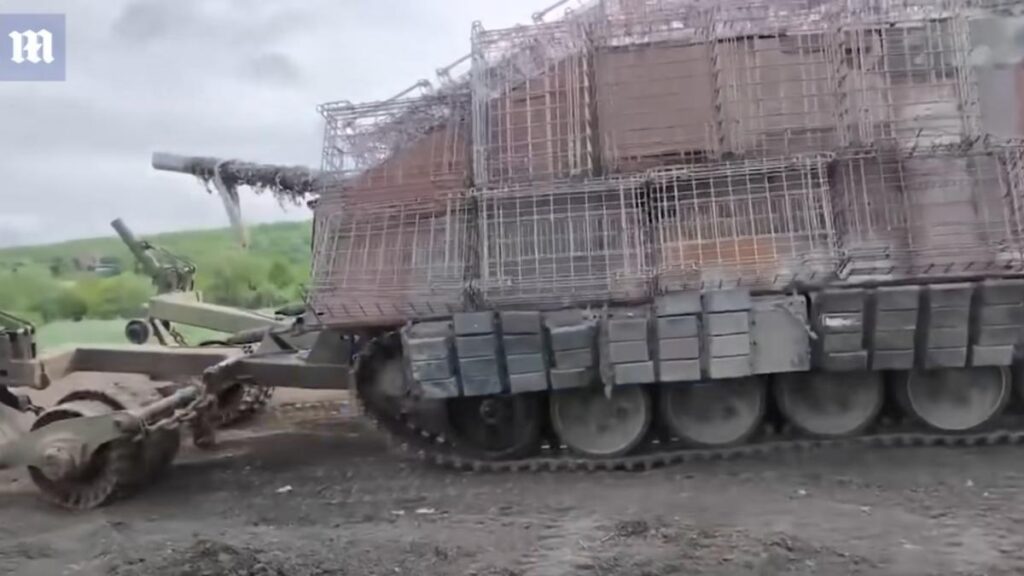As the conflict in Ukraine persists, both Ukrainian and Russian forces have significantly adapted their military strategies. This dynamic evolution of warfare is not uncommon in protracted conflicts, where both sides continuously modify their tactics to respond to the changing battlefield. Among the more peculiar developments in this ongoing war are the so-called “Turtle Tanks” created by Russian forces. These tanks, typically based on the aging T-72 design, are notably reinforced with a crude outer shell composed of various materials such as rebar and corrugated sheet metal. The intention behind this modification is to enhance protection against the increasing threat of FPV (First-Person View) drone attacks launched by Ukrainian troops.
Initially, some military analysts viewed the Turtle Tanks as a testament to Russian ingenuity, presuming that the added armor would effectively protect the vehicles from Ukrainian firepower and confer a strategic advantage to their operators. However, the reality on the battlefield has proven to be far less favorable for these modified tanks. Key drawbacks emerged that undermined their intended purpose. Specifically, the bulky protective shell hinders the tank’s turret’s ability to rotate and severely restricts crew visibility. This situation parallels historical instances during World War II, where excessive armor on tanks often led to diminished maneuverability, rendering them slow-moving and susceptible to attacks.
Despite modifications like adding rollers or plows to the front of these Turtle Tanks to detonate enemy landmines, the effectiveness of these innovations appears limited. In a notable incident highlighted on Ukraine’s official Ministry of Defense social media accounts, a Turtle Tank equipped with such implements was destroyed after triggering multiple landmines simultaneously. The precise mechanism behind this event remains uncertain, raising questions about possible advancements in Ukrainian mine technology or tactical maneuvers that could complicate the Russian approach to mine-clearing.
The ongoing exchanges of military technologies and adaptations underscore the accelerating arms race within the conflict. As each side attempts to outmaneuver the other with novel weaponry and tactics, the importance of innovation cannot be overstated. New strategies are continuously developed in response to observed failures, revealing a tense environment where one side may assume it has gained the upper hand, only for the other side to quickly prove otherwise. This cycle of innovation and counter-innovation reflects the broader context of modern warfare, where technological superiority does not guarantee victory.
The Turtle Tanks thus illustrate an essential aspect of the war in Ukraine: the complexity and unpredictability of modern battlefield dynamics. While these makeshift vehicles were designed to bolster Russian defenses against aerial attacks, they have not sufficiently addressed the fundamental vulnerabilities of armored warfare. This situation compels continued adaptation and evolution from both sides, as every tactical decision shapes the ongoing conflict’s trajectory. The war in Ukraine serves as a critical case study on contemporary military practices, highlighting the necessity for forces to remain agile and responsive to rapidly changing circumstances.
In conclusion, the development of Turtle Tanks by Russian forces reveals both the creative and troubling aspects of warfare in Ukraine, where practical military adaptations are continuously tested by real-world conditions. This conflict illustrates the iterative nature of military strategy, as both sides strive to gain an advantage through innovation, while also exposing the potential pitfalls of over-reliance on untested adaptations. As the war grinds on, the balance of power remains in constant flux, driven by the persistence and ingenuity of both Ukrainian and Russian forces navigating the harsh realities of modern warfare.

